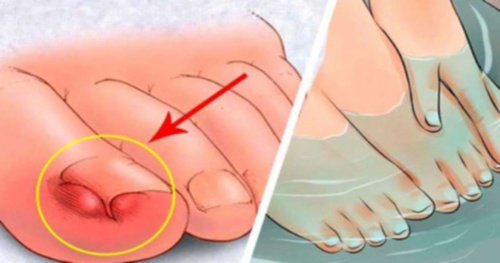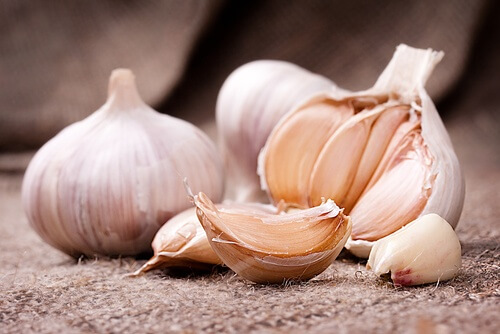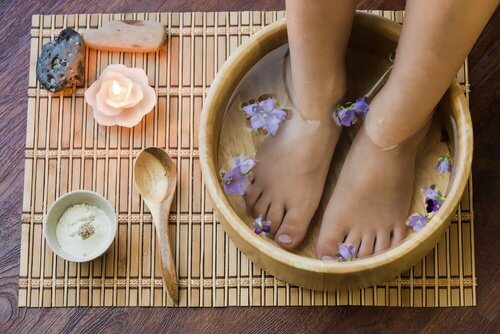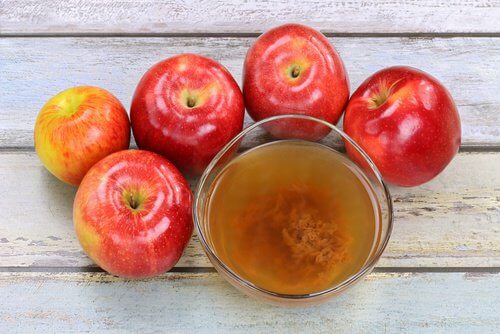Ingrown toenails - six home remedies


Reviewed and approved by the pedagogue in physical education and nutritionist Elisa Morales Lupayante
Ingrown toenails are caused when a portion of the nail of the big toe bends and becomes embedded in the soft tissue. Known medically as onychocryptosis, they usually develop from a microbial inflammation of the soft areas surrounding them.
Most of the time they cause pain, redness, and inflammation. However, as they progress out of control, a yellowish fluid or pus may produce and this means there’s an infection.
This problem could be caused by poor nail care, using inappropriate socks, or small lesions that were left unattended. On the other hand, it could also be genetic in certain cases. For example, there may have a family history of deformed nails.
The good news is that thanks to the properties of certain ingredients, you can use different home remedies for ingrown toenails that will soothe them in little time. Below, we’d like to share with you 6 of the most effective home remedies for ingrown toenails so that you can apply them when you notice the first sign of this problem.
Home remedies for ingrown toenails
1. Garlic

Ingredients
- 1 clove of garlic
- 1 adhesive bandage
What to do
- First, crush one clove of garlic in a mortar and pestle and apply the paste to your nail.
- Then cover with the adhesive bandage and allow it to act overnight.
- Repeat treatment every day until you experience complete relief.
2. Onion juice
Natural onion juice has properties similar to those of garlic. It, too, controls bacterial and fungal growth.
In addition, its calming and anti-inflammatory properties control redness in the damaged area, and in a matter of days, it helps it return to its normal state.
Ingredients
- 1/2 onion
- 5 drops of lime juice
- 1 cotton ball
What to do
- First, blend the onion with the drops of lemon juice. Make sure to extract all the juice.
- Then strain it with a cloth and apply the liquid using a cotton ball.
- Apply twice a day, every day.
We recommend reading Four Benefits of Sleeping with Onions on Your Feet
3. Epsom salts for ingrown toenails

Ingredients
- 1/4 c. Epsom salts (62 grams)
- 8 c. of water
What to do
- First, heat the water to a temperature that is tolerable to your feet. Add the Epsom salts next.
- Then soak your feet for 15 minutes. Finally, dry them and cover them with socks.
4. Hydrogen peroxide for ingrown toenails
Because it is a powerful disinfectant, hydrogen peroxide is one of the best home remedies for ingrown toenails for softening and rejuvenating the skin around the affected nail.
Using this substance will soothe your pain and also prevent bacteria and fungus from developing an infection.
Ingredients
- 1/2 c. hydrogen peroxide (125 mL)
- 4 c. of water
What to do
- First, heat the water and mix it with the half cup of hydrogen peroxide.
- Soak your feet for 15 to 20 minutes and then dry them.
- Put some socks on or just cover the affected toe with a bandage.
- Repeat this treatment every day for as long as necessary.
See also: Treat Varicose Veins with Aloe Vera, Carrot and Apple Cider Vinegar
5. Apple cider vinegar

Ingredients
- 1/4 c. apple cider vinegar (62 mL)
- 4 c. of water
What to do
- First, add the apple cider vinegar to the hot water.
- Then soak your feet for 20 minutes. Dry next.
- Repeat this process every day, for at least one week.
6. Vicks VapoRub
This classic menthol salve is an antiseptic product. In addition, it soothes the typical pain and irritation caused by ingrown toenails.
You can apply it all by itself to reduce pain, although you could also combine it with a bit of garlic for more potent and faster results.
Ingredients
- 1 tsp. Vicks VapoRub
- 1 clove garlic
- 1 bandage
What to do
- First, crush the clove of garlic and mix it with the salve to create a paste.
- Then rub on the ingrown nail and cover with a bandage.
- Finally, allow it to sit overnight and repeat the process for 5 consecutive days.
Keep in mind that to obtain the best results with these home remedies you must cut and file your nails into soft squares. If the infection doesn’t go away then consult your doctor as soon as possible.
All cited sources were thoroughly reviewed by our team to ensure their quality, reliability, currency, and validity. The bibliography of this article was considered reliable and of academic or scientific accuracy.
- Clinic, C. (2024). Ingrown toenail? Try these home remedies. Cleveland Clinic. https://health.clevelandclinic.org/how-to-get-rid-of-ingrown-toenails
- Clinic, C. (2024). Should You Take an Epsom Salt Bath? Cleveland Clinic. https://health.clevelandclinic.org/7-things-you-probably-didnt-know-about-epsom-salt
- Kairey, L., Agnew, T., Bowles, E. J., Barkla, B. J., Wardle, J., & Lauche, R. (2023). Efficacy and safety of Melaleuca alternifolia (tea tree) oil for human health—A systematic review of randomized controlled trials. Frontiers In Pharmacology, 14. https://www.frontiersin.org/journals/pharmacology/articles/10.3389/fphar.2023.1116077/full
- Silva, D., Ferreira, M. S., Sousa-Lobo, J. M., Cruz, M. T., & Almeida, I. F. (2021). Anti-Inflammatory Activity of Calendula officinalis L. Flower Extract. Cosmetics, 8(2), 31. https://www.mdpi.com/2079-9284/8/2/31
- Uñas encarnadas – Diagnóstico y tratamiento – Mayo Clinic. (2022). Mayo Clinic. https://www.mayoclinic.org/es/diseases-conditions/ingrown-toenails/diagnosis-treatment/drc-20355908
This text is provided for informational purposes only and does not replace consultation with a professional. If in doubt, consult your specialist.








